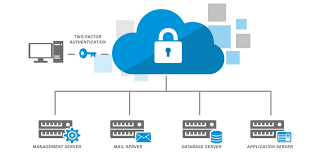This transformational network computing architecture is divided into two categories: public cloud and private cloud. Cloud computing is typically divided into two categories: deployment type and service model. Cloud computing is being used by an increasing number of businesses, but the effects are both overwhelming and perplexing. Let’s start with a fundamental grasp of public and private clouds. A private cloud is a proprietary architecture delivered via an intranet that is dedicated to the requirements and goals of a single enterprise. It is only accessible by a small group of people within the firewall.
Third-party companies offer public cloud computing services through the internet, making them open to anybody who wants to buy them. It might be offered for free or for a fee based on CPU consumption, bandwidth, or storage. Technology, ownership, security, location and data center, customization, cost and upgrade, and administration are all aspects of both public and private clouds. It’s indeed up to an individual or organization to select between public and private clouds based on their business needs and specifications.
Private cloud
The private cloud is an architecture that is only utilized by one company; it can be physically placed on the company’s premises or maintained by third-party providers. A private Cloud, on the other hand, maintains infrastructure and services on a private network, with hardware and software devoted entirely to your business.
- Private clouds are ideal for businesses that require a high level of data privacy, latency, and security, as well as those that are heavily regulated and require superior private and secure data hosting.
- Companies that require high-speed access to their file system.
- Those who can afford to pay for the costs of running a next-generation cloud data center.
- Data and programs that are vital to the company are hosted on this server.
Public cloud
Third-party service providers maintain and host public cloud resources such as storage and servers, which are then distributed through the internet. Microsoft Azure, for example, must share its hardware and network devices with other firms that have registered to the same cloud service providers since it is owned by third-party service providers.
- Data storage and archival are best served by the public cloud.
- Microsite and application hosting as well as on-demand hosting for latency-sensitive and mission-critical web tiers.
- For big applications, an auto-scaling environment is available.
- To accommodate a big number of clients, businesses require infrastructure.
- Many different entities, such as research institutions and non-governmental organizations, are involved in project development.



